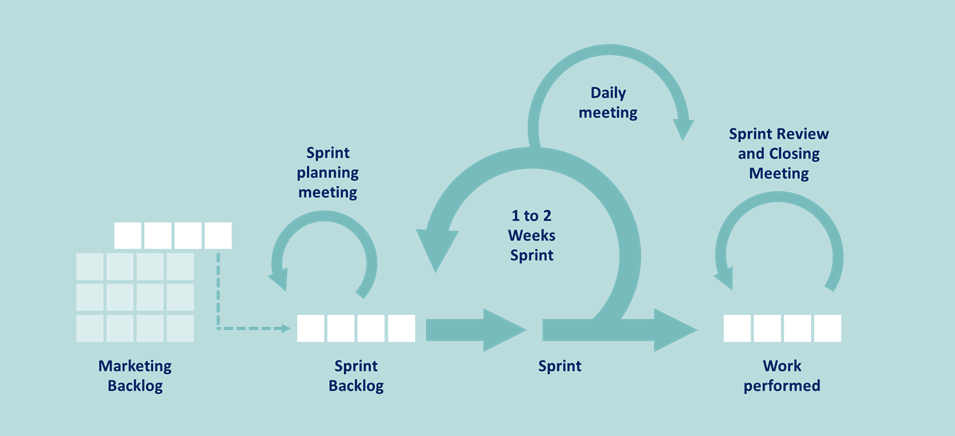Organisations are increasingly turning to agile methodologies to improve the marketing teams’ performance. This new approach makes it possible to have teams that are fast, productive, flexible and aligned with the business, resulting in sales growth. The transition is usually not easy, especially when there are external partners. Recent research shows that 80% reported that change is full of obstacles, but the gains are significant, and worth the effort of the transition.
What is Agile Marketing?
Agile Marketing uses sprints as a new paradigm for planning and executing work. Agile sprints are a simple and effective methodology, long used for software development, but with full applicability in marketing teams.
In recent years, we have witnessed an evolution of marketing – it has become more data-driven, quantitative and iterative. Agile sprints allow us to move from slow processes, and inefficient collaboration, to an agile approach with teams that are productive, fast and aligned with the business.
The methodology is applied to teams to carry out their daily work. The goal is to have a short, limited cycle (sprint) to plan and execute work. It is a period, usually 1 to 2 weeks, in which the marketing team will complete a set of defined tasks.

Before the sprint planning meeting, the priorities of the marketing backlog are defined according to the business needs. The backlog is a list of projects and tasks that the marketing team is responsible for finishing. A size is assigned to each of the backlog items which will let you know how much work the team can accomplish in a sprint.

The Benefits of Agile for Marketers and Brands
Faced with market and consumer behaviour changes to the strategies implemented, which are happening at an ever-increasing speed, it is necessary to quickly respond. To achieve this, the methodology introduces a set of changes to marketing teams:
- To be agile, they need to be more flexible and collaborative;
- To react quickly to the market, they need to plan and evaluate strategies in shorter timeframes;
- To improve continuously, they need to be customer-focused.

The benefits of its implementation are both for the business, with a significant impact on revenue, and for the people involved. Teams become more productive, and more agile, the staff is more motivated, risks, costs and errors decrease, and alignment with the market and the business is improved.
By applying this new paradigm of agile organisation, marketing teams can test and realise new ideas five to ten times faster and execute a campaign in two to three times less Lead Time than a traditional marketing team.
In addition to speed, agile teams spend 10 to 30% less on executing marketing activities. Finally, organisations in which marketing embraces agile methods typically experience a 20 to 30% increase in marketing revenue.

Do you still have questions about agile marketing?
1- What is Agile?
The agile concept, often related to software development, represents a fast and simple value creation approach. An Agile team works iteratively, focusing on delivering value to the customer, working in increments and avoiding efficiency losses. These processes are characterised by their high adaptability.
2- What are Agile sprints?
Agile projects are comprised of agile sprints. These sprints are described as short, time-bound intervals where a team must complete a predefined number of tasks.
3- What is backlog?
To develop a strategic plan, it is necessary to create a backlog list. A backlog list collects all the tasks that must be accomplished to reach a goal. Using the backlog, it is possible to set priorities and manage the workload of each sprint.
See more on Marketing & Sales
Find out more about improving this business area
